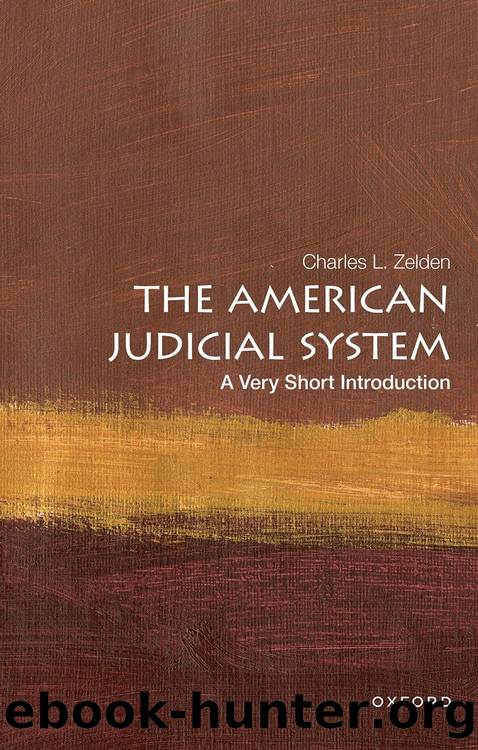The American Judicial System: a Very Short Introduction by Charles L. Zelden

Author:Charles L. Zelden [Zelden, Charles L.]
Language: eng
Format: epub
ISBN: 9780190644932
Publisher: Oxford University Press
Published: 2022-06-16T00:00:00+00:00
No matter the method of selection adopted or the length and isolation of their terms in office, state and federal judges share many related attributes. For one thing, judges are usually trained lawyers. All judges are college educated; most have attended well-established schoolsâelite private schools, flagship state programs, or, for local judges, the most prestigious local institutions of higher learning. Most, but not all, have roots in the middle and upper strata of society. Even those judges from disadvantaged backgroundsâbased on race, gender, ethnicity, and/or wealthâare usually established members of American society by the time they reach the bench. Further, all judges, to one extent or another, are politically active and connected. One does not become a judge without a power base. This separates them from the crowd. And a judicial seat is earned; all judges are judges because they want to be and recognize the need to show that they are qualified to be judges and merit being named or elected as judges. One does not simply fall into the role of judge: it takes effort (and oftentimes luck) to become and remain a judge.
Given historical trends affecting economic, social, and political success in the United States, white males have dominated both the state and the federal judiciaries. Over time, women have increased their membership of the state bench to approximately 30 to 40 percent of all judicial seats (depending on the level of court and location); for minorities, the percentages vary but rarely rise above 20 percent of the total (with many states falling significantly below that ratio). At the federal level, gender and racial percentages depend on the appointing presidentâwith Democratic presidents more likely to appoint women and minority judges; only Presidents Obama and Biden, however, named more women and minority judges than they did white males.
Most judges come to the bench either directly from private practice (typically from established law firms), from prosecutorsâ offices, or from other judicial positions (most commonly moving from lower courts to higher appellate seats). All, no matter their origins, were successful in their pre-judicial careers. Technical competency and professional recognition are unwritten but largely mandatory requirements for becoming a judge. In fact, the higher the position in the judicial pyramid, the more technical legal competency and past examples of professional success are required. This demand for pre-judicial success has traditionally put women and minorities at a disadvantage. In the law as in society in general, women and minorities generally have had fewer financial resources, faced more structural barriers, and have had fewer contacts within the organized legal community on which to build success. Still, viewed over time, there has been notable growth in the diversity of the state and federal benches. In 1980, only 10 women served on state appellate courts of last resort; three decades later, they numbered 116. Similar gains (though in smaller numbers) occurred during these years for minority judges.
Interestingly, one of the more notable changes over time in the makeup of the judiciary has been differences in judicial philosophy between judges.
Download
This site does not store any files on its server. We only index and link to content provided by other sites. Please contact the content providers to delete copyright contents if any and email us, we'll remove relevant links or contents immediately.
The Borden Murders by Sarah Miller(4197)
The Secret Barrister by The Secret Barrister(3568)
Police Exams Prep 2018-2019 by Kaplan Test Prep(2449)
Coroner's Journal by Louis Cataldie(2383)
The Splendid and the Vile by Erik Larson(2309)
Terrorist Cop by Mordecai Dzikansky & ROBERT SLATER(2018)
My Dark Places by James Ellroy(1843)
A Colony in a Nation by Chris Hayes(1834)
The Art of Flight by unknow(1767)
Black Klansman by Ron Stallworth(1726)
A Life of Crime by Harry Ognall(1622)
Objection! by Nancy Grace(1603)
The New Jim Crow by Michelle Alexander(1582)
Anatomy of Injustice by Raymond Bonner(1560)
Whoever Fights Monsters by Robert K. Ressler(1552)
Invisible Women by Caroline Criado Perez;(1550)
Obsession (The Volkov Mafia Series Book 1) by S.E Foster(1518)
American Prison by Shane Bauer(1498)
A is for Arsenic: The Poisons of Agatha Christie (Bloomsbury Sigma) by Kathryn Harkup(1484)
